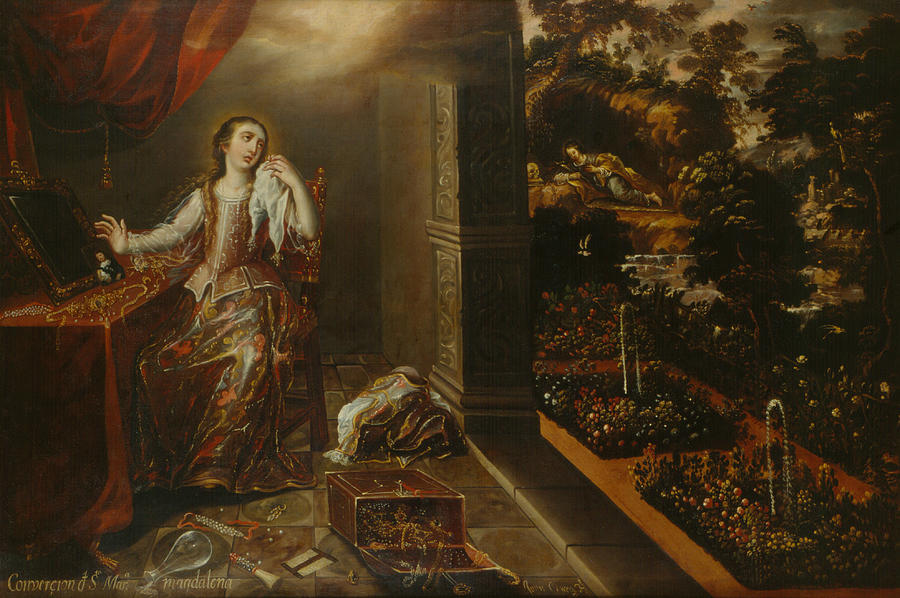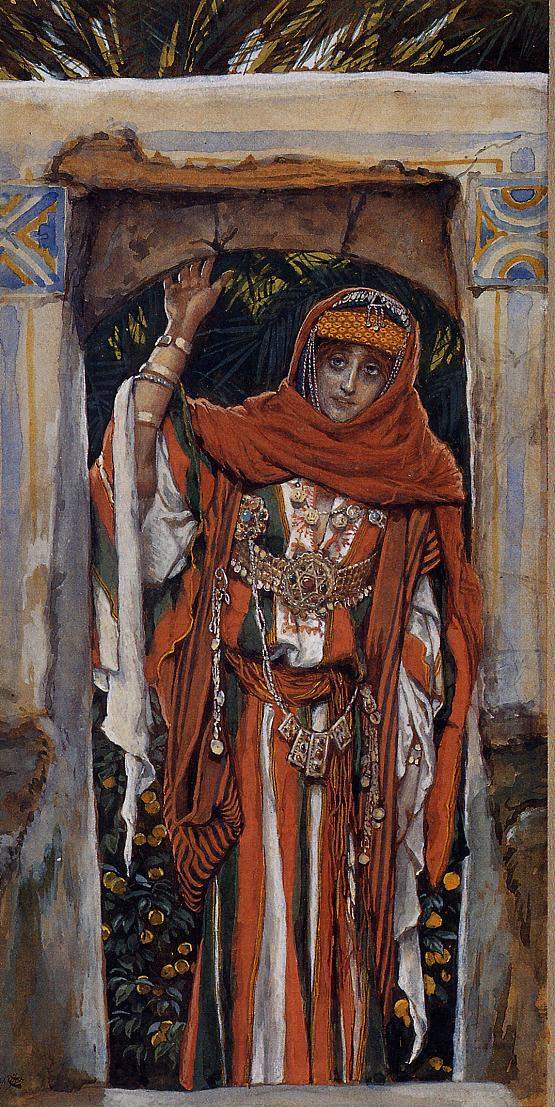
Top 10 Facts About Mary Magdalene Discover Walks Blog
The Repentant Magdalene, also called The Conversion of Mary Magdalene, is an oil painting of the early 1660s by the Baroque Italian painter Guido Cagnacci.It shows Mary Magdalene, beside her remonstrating sister Martha, at the moment she repents, echoed by an allegorical pairing of Virtue, an angel, chasing out Vice, a devil.The painting forms part of the collection of the Norton Simon Museum.

CONVERSION OF MARY MAGDALENE (by Paolo Veronese, 1547, National Gallery
St. Mary Magdalene (flourished 1st century ce, Palestine; feast day July 22) one of Jesus ' most celebrated disciples, famous, according to Mark 16:9-10 and John 20:14-17, for being the first person to see the resurrected Christ. The unchallenged facts about her life establish that Jesus cleansed her of seven demons (Luke 8:2 and Mark 16:.

Antiques Atlas Conversion Of Saint Mary Magdalene After Delaroche
The Conversion of Mary Magdalene By Veronese - Top 8 Facts By: Trace Bradley Published: September 9, 2021 Many of the most renowned artists in history became apprentices during their early teens. This was also the case by one of the leading Mannerist artists of the Venetian School of the 16th century, Paolo Veronese (1528-1588).

Mary Magdalene before her Conversion posters & prints by James Jacques
Who Was Mary Magdalene? From the writing of the New Testament to the filming of The Da Vinci Code, her image has been repeatedly conscripted, contorted and contradicted James Carroll June 2006.

Aardvark Alley Luther, Jesus, and Mary Magdalene
This work was acquired by the Mexican Ministry of Tax and Revenues in 1929, and donated by the latter to the San Carlos Academy. It formed part of the founding endowment of the MUNAL, having been given to the latter by the San Diego Viceregal Painting Gallery in 1982. Title: The Conversion of Saint Mary Magdalene. Creator Lifespan: ca.1645 - 1716.
The Conversion of Mary Magdalene Guido Reni (Bologna 1575 1642
The Conversion of Mary Magdalene is an oil painting, an early work by the Italian Renaissance artist based in Venice, Paolo Veronese (1528-1588). He was known for his sumptuous paintings with a dramatic and colourful style. Dating from circa 1545-1548, the painting was commissioned by a noble patron in Verona. [1]
The Conversion of Mary Magdalene Guido Reni (Bologna 1575 1642
Pedro Campaña (after Federico Zuccaro), The Conversion of Mary Magdalene, about 1562. Read about this painting, learn the key facts and zoom in to discover more.

The Conversion Of Mary Magdalene FOR SALE! PicClick
Conversion of Mary Magdalene Format for Holy Hour Scripture Reading: Luke 7:36-50 Context: Simon, a Pharisee, invited Jesus to dinner at his house. It was a common courtesy that guests be welcomed with a kiss, be anointed on the head with oil and be given water to wash their feet when they arrive. Simon did not offer any of these courtesies.

Litany Lane Sunday, July 22, 2012 Litany Lane Blog comtemplate, Mark
The Conversion of Mary Magdalene c. 1661-62 Guido Cagnacci (Italian, 1601-1663) On View In the seventeenth century, Guido Cagnacci was celebrated for his deeply sensual paintings of female saints and heroines. The Conversion of Mary Magdalene , regarded as Cagnacci's masterpiece, presents a unique treatment of this well-known subject.

"St. Mary Magdalene hunting before her conversion" Master of the Legend
One explanation is patronage. It is thought the painting was commissioned by, or at least intended for, Maria Maddalena of Austria, the Grand Duchess of Tuscany, whose name saint was Mary Magdalene (Maria Maddalena in Italian). She was known for her lavish tastes, and her involvement could explain the sumptuous tone of the painting.

The Conversion Of Mary Magdalene Painting by Jacopo Tintoretto Fine
Brotherhood [2018] Directed by: Meryam Joobeur. Written by: Meryam Joobeur. Produced by: Maria Gracia Turgeon, Habib Attia. Mohamed is deeply shaken when his oldest son Malik returns home after a long journey with a mysterious new wife. 'Conversion of Mary Magdalene' was created in c.1547 by Paolo Veronese in Mannerism (Late Renaissance) style.

The Conversion of Saint Mary Magdalene Painting by Juan Correa Fine
Her Conversion of the Magdalene was likely executed in Florence in 1615-16. In post-Tridentine theology, Mary Magdalene was an exemplar of the penitent sinner. Artemisia captures a delicate balance between the Magdalene's sensuality and her faith through both her attire and the gesture of clutching her breast.

The Conversion of Saint Mary Magdalene 17th century by Juan Correa
Dressed in luxurious yellow satin, her head crowned with blonde ringlets, a young woman clutches her breast and gazes upward overcome with emotion. Her dress almost obscures the chair she sits on, and behind her to the right is a small table with a mirror on it.

Mary Magdalene before her Conversion Джеймс Тиссо
Martha and Mary Magdalene (c. 1598) is a painting by the Italian Baroque master Michelangelo Merisi da Caravaggio. It is in the Detroit Institute of Arts. Alternate titles include Martha Reproving Mary, The Conversion of the Magdalene, and the Alzaga Caravaggio . History

Scenes from the Legend of Mary Magdalene Conversion of the Rulers of
Paolo Veronese, The Conversion of Mary Magdalene, about 1548. Read about this painting, learn the key facts and zoom in to discover more.

Mary Magdalene, Model of Conversion the Wandering Gyrovague
Mary Magdalene According to the Bible. One of Jesus' most celebrated disciples, most of what is known about Mary Magdalene comes primarily from the New Testament Gospels. She is believed to have.